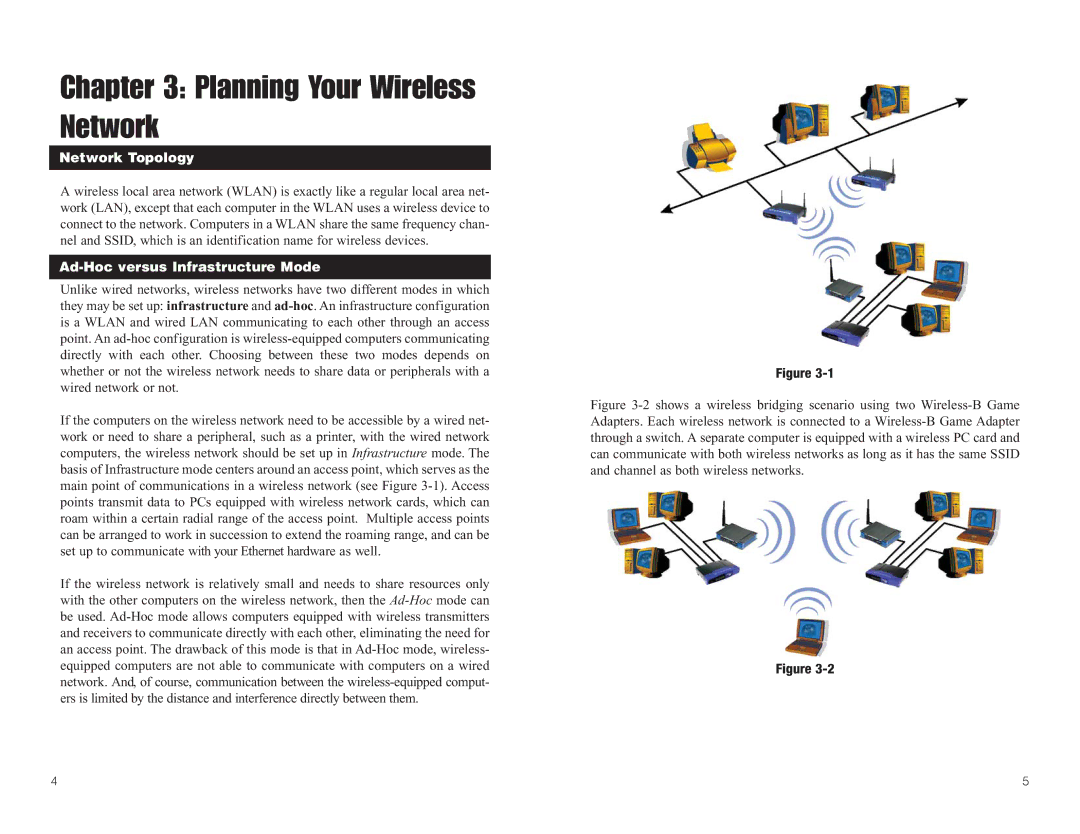WGA11B specifications
The Linksys WGA11B is a wireless gaming adapter that allows users to connect their gaming consoles and other devices to a wireless network. Designed to provide a seamless online gaming experience, the WGA11B boasts several key features and technologies that set it apart from traditional wired connections.One of the standout characteristics of the WGA11B is its support for the 802.11b wireless standard. Operating at a frequency of 2.4 GHz, this gaming adapter is well-suited for delivering stable connectivity and impressive performance. Though the 802.11b standard is somewhat dated, it remains widely used and provides sufficient bandwidth for online gaming and basic internet browsing.
The Linksys WGA11B is compatible with a wide range of gaming consoles, including popular platforms like PlayStation 2, Xbox, and Nintendo GameCube. This versatility allows gamers to enjoy online multiplayer gaming without the hassle of running long Ethernet cables. The easy-to-use setup process involves simply connecting the adapter to the console via Ethernet and configuring the wireless settings, making it highly accessible for users of all technical skills.
Security is a critical aspect of any wireless device, and the WGA11B includes support for WEP, WPA, and WPA2 encryption protocols, ensuring that user data remains secure during online gaming sessions. Additionally, the adapter features an advanced firewall that helps protect the gaming console from potential threats and unauthorized access, creating a safer gaming environment.
Another significant feature of the WGA11B is its ability to deliver a strong wireless signal, which is essential for minimizing lag and maintaining a stable connection. The device incorporates advanced antennas to enhance signal strength and coverage, enabling gamers to enjoy their online experiences without interruptions.
Moreover, the Linksys WGA11B supports a range of connection speeds, allowing for dynamic content streaming and quick response times, which are critical for competitive gaming. Users can expect reliable performance with low latency, making it an optimal choice for gamers looking to enhance their online gameplay.
In summary, the Linksys WGA11B wireless gaming adapter combines compatibility with leading gaming consoles, robust security features, and reliable performance to deliver an exceptional gaming experience. Its ease of use and strong connection capabilities make it a valuable addition to any gamer’s setup. Whether you are a casual player or a competitive gamer, the WGA11B provides the connectivity solutions needed to elevate your online gaming experience.

